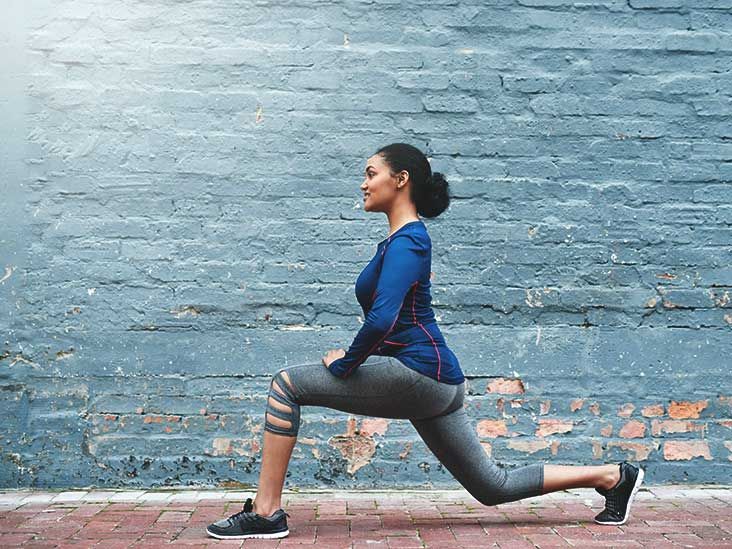So, you finished a tough workout. Maybe you pushed your limits using favorite home gym equipment, maybe hit a new personal weightier on the treadmill, or powered through a strength session. That feeling of winnings often comes mixed with tiredness and the expectation of soreness. This is where exercise recovery comes in.
Effective exercise recovery isn’t just well-nigh resting. It’s an zippy process that helps your soul repair, rebuild, and get stronger for your next session. Skipping exercise recovery can lead to fatigue, reduced performance, and plane injury.
This guide dives into the science overdue exercise recovery and provides practical tips to help you vellicate when faster and stronger. Understanding this process is key to achieving your fitness goals.
Why is Exercise Recovery So Important?
When you exercise, expressly intensely or with new movements, you create tiny micro-tears in your muscle fibers. This is a normal process tabbed Exercise-Induced Muscle Forfeiture (EIMD).

Your soul responds with inflammation, sending cells to repair the forfeiture (Peake, J. M. et al., 2017). This repair process is what makes your muscles stronger and increasingly resilient over time, forming the foundation of constructive exercise recovery.
Understanding Muscle Soreness (DOMS)
That muscle stiffness and soreness you finger a day or two without a nonflexible workout? That’s Delayed Onset Muscle Soreness, or DOMS. It typically peaks 24 to 72 hours post-exercise (Physiopedia: DOMS). While uncomfortable, DOMS is usually a sign that your muscles are adapting. Proper exercise recovery can help manage DOMS symptoms effectively.
Fighting Fatigue
Exercise moreover uses up your body’s fuel stores (like glycogen) and creates metabolic byproducts. Fatigue sets in when fuel runs low or waste products build up (GSSI: Metabolic Factors in Fatigue). Recovery helps restore energy levels and well-spoken out this waste, a vital part of the exercise recovery cycle.
Ultimately, smart exercise recovery helps you:
Reduce muscle soreness || Repair muscle tissue || Replenish energy stores || Adapt and get stronger || Lower your risk of injury || Maintain motivation for your fitness journey || Fueling Your Recovery: Nutrition Strategies for Exercise Recovery || What you eat and drink without exercise plays a huge role in how quickly and powerfully you recover. Optimizing nutrition is inside to successful exercise recovery.
The Role of Macronutrients
Your soul needs the right towers blocks and energy to repair itself without a workout. Carbohydrates for Glycogen Replenishment. Intense or long workouts deplete your muscle glycogen, your body’s main fuel source. Replenishing these stores is vital for post-workout recovery, expressly if you train frequently.
Timing: Consume carbohydrates soon without your workout, ideally within 30-60 minutes, when your muscles are most receptive to storing glycogen (Ivy, J.L. et al., 1988). This is crucial if you have flipside session within 24 hours.
Amount: Aim for virtually 1.0-1.2 grams of carbohydrates per kilogram of soul weight per hour during the first 4 hours post-exercise for rapid exercise recovery (Kerksick, C.M. et al., 2017). Good sources include fruits, oatmeal, rice, potatoes, or sports drinks. Pair carbs with protein for potentially enhanced glycogen storage. Check out these healthy eating tips.
Protein for Muscle Repair
Protein provides the amino acids needed to repair those micro-tears and build new muscle tissue (a process tabbed muscle protein synthesis, or MPS). This is essential for fitness recovery and adaptation.
Timing: While the “anabolic window” idea (needing protein immediately) is debated, consuming protein within a couple of hours post-workout is beneficial. Increasingly importantly, focus on getting unbearable protein throughout the day (Schoenfeld, B.J. et al., 2013).
Amount: Aim for 20-40 grams of high-quality protein post-exercise to stimulate MPS (Moore, D.R. et al., 2014). Total daily intake for zippy individuals should be virtually 1.2-2.0 grams per kilogram of soul weight. Good sources include lean meats, fish, eggs, dairy, legumes, and protein supplements.
Using dumbbells powerfully requires muscle repair fueled by protein.
Hydration is Key for Exercise Recovery
You lose fluids and electrolytes (like sodium) through sweat. Dehydration hinders exercise recovery and performance. How much? Weigh yourself surpassing and without exercise. For every kilogram (2.2 lbs) lost, drink well-nigh 1.5 liters (about 6 cups) of fluid (Sawka, M.N. et al., 2007).
What to drink: Water is usually sufficient for shorter workouts. For longer or increasingly intense sessions, expressly in the heat, include electrolytes via sports drinks or subtracting a pinch of salt to your water or food. Proper hydration is a cornerstone of constructive exercise recovery.
The Power of Sleep in Exercise Recovery
Sleep is arguably the most potent exercise recovery tool available, and it’s free. During sleep, your soul undergoes hair-trigger repair and regeneration processes.

Hormones at Work During Sleep Recovery. Deep sleep triggers the release of Growth Hormone (GH), which is essential for tissue repair and muscle growth (Van Cauter, E. et al., 2023). Sleep moreover helps regulate testosterone (another muscle-building hormone) and cortisol (a stress hormone that can unravel lanugo muscle). Lack of sleep disrupts this hormonal balance, hindering exercise recovery.
Muscle Protein Synthesis and Sleep
Studies show that plane one night of poor sleep can reduce muscle protein synthesis, making it harder for your muscles to repair and grow stronger (Saner, N.J. et al., 2020). Consistent, quality sleep supports this vital speciality of exercise recovery.
How Much Sleep Do You Need?
While individual needs vary, most adults need 7-9 hours. Athletes undergoing intense training often goody from more, typically aiming for 8-10 hours per night (Bird, S.P., 2013). Prioritizing sleep is crucial for both physical and mental health benefits of exercise.
Benefits: Increases thoroughbred flow, which helps well-spoken metabolic waste products like lactate faster than passive rest (Menzies, P. et al., 2010). May help reduce feelings of stiffness.
Limitations: Its effect on reducing muscle soreness (DOMS) is unclear, and it may not modernize subsequent high-intensity performance compared to passive rest in some situations (Ortiz Jr, R.O. et al., 2019).
How-to: Perform 10-20 minutes of light cardio (like walking on a treadmill) or dynamic movements without your main workout. This gentle movement supports the overall exercise recovery process.
Passive Recovery: Tools and Techniques for Fitness Recovery. Passive recovery involves minimal movement and often utilizes external tools to enhance fitness recovery.
Stretching (Static vs. Dynamic)
Dynamic Stretching: Controlled movements through a range of motion (e.g., leg swings, arm circles). Weightier used during warm-ups to prepare muscles.
Static Stretching: Holding a stretch for a period (e.g., 30 seconds). Weightier used without a workout or on rest days to modernize flexibility.
While it feels good, research shows static stretching without exercise does little to reduce DOMS or speed up exercise recovery markers compared to just resting (Herbert, R.D. et al., 2011, Afonso, J. et al., 2021). Consider incorporating yoga poses for flexibility.
Foam Rolling (SMR)
Using a foam roller applies pressure to muscles and fascia. Benefits: Consistently shown to reduce muscle soreness (DOMS) and muscle tenderness (Cheatham, S.W. et al., 2015). Can modernize short-term flexibility. A useful tool for exercise recovery. || How-to: Roll slowly over major muscle groups worked during your session for 90-120 seconds each.
